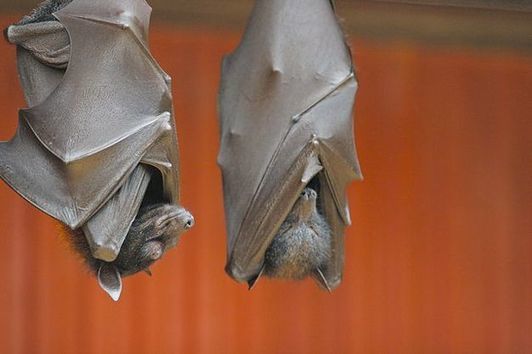Mammals Harbor At Least 320,000 Undiscovered Viruses
Humans have been playing defense against viruses for much of history. Think about it, -people mainly take action against a virus once it has already become a threat. Just recently, researchers have switched tactics and taken the offensive. A team of scientists lead by Simon Anthony of Columbia University released a study this month in the journal mBio estimating the number of novel viruses in all mammalian species to be 320,000. Anthony and his colleagues’ estimate of mammalian viruses is the first ever to be statistically supported. With this information scientists may discover potentially dangerous viruses before they transition from wildlife to humans.
Roughly 70% of all new viruses infecting humans originated in other animals. Viruses that originate in mammals are particularly hazardous because they are easily transferable to people; their exposure to other mammalian species allows them to skillfully “navigate our own warm-blooded bodies.” The knowledge of just how many viruses may be lurking in mammals helps scientists assess the threat viruses pose to society. In order to calculate the number of viruses, scientists studied one species of flying fox (a type of bat) known as Pteropus giganteus. Found in Bangladesh, the flying fox is a known carrier of multiple viruses, such as Nipah, and was therefore well-suited for the study. Scientists repeatedly took biological samples – 1,900 in all – from bat populations over a five year span. From those samples fifty-five different viruses from nine viral families were identified. Only five of the viruses found were previously known to scientists! Calculating that another three unknown viruses were not accounted for in the study, the researchers estimated that flying foxes alone harbor 58 viruses. If all 5,486 known species of mammals carried 58 different viruses, then the total number of undiscovered mammalian viruses is at least 320,000.
To clarify, 320,000 viruses is a very rough estimate. The scientists assumed that every mammal carries 58 viruses based on their findings with flying foxes. The problem with this figure is that flying foxes, and bats in general, are virus friendly animals. The lifestyle factors that predispose bats to be good viral carriers are living in large communities, long distance travel and dispersal throughout the world. It is unlikely that the remaining 5,485 other mammals also carry exactly 58 viruses. Scientists are not sure by what factor the estimate could be off. Dr. Anthony explains “it is very likely that 320,000 viruses under-estimates the actual number of viruses, but we have no way of knowing by how much. It is for this very reason that we need to expand and repeat these systematic studies, and only then will we be able to refine our estimations with greater confidence.” This study is significant because it presents the first statistically supported estimate of mammalian viruses.
Before now, some scientists speculated there to be millions of undiscovered mammalian viruses. Only 320,000 mammalian viruses is a much more reassuring and manageable number than ten million. Now that the number of estimated viruses has dropped from the millions to hundred thousands, identifying each one is feasible. The researchers’ goal is to track down every single mammalian virus and catalogue it. Dr. Anthony predicts that all mammalian viruses can be identified over a 10 year period for a mere $6.3 billion. You may not think of $6.3 billion as a small amount, but in comparison to the cost of pandemics it’s not too outlandish. The SARS outbreak alone cost $16 billion dollars. For just $1.2 billion the scientists estimate that 85% of mammalian viruses can be identified.
Source: www.nature.com
See on Scoop.it – Virology and Bioinformatics from Virology.ca
